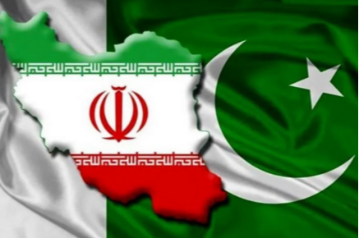 Read the first part here.
Read the first part here.
Unresolved issues
Long-standing bilateral issues and irritants have contributed to anti-Indian sentiments too. These unresolved issues have created a perception that India lacks interest in the region and is incapable of looking beyond its national interests. Although domestic political compulsions and the lack of political will exist on both sides, the scepticism, fear, and expectations from India have reinforced the negative perceptions of the former.
For instance, water-sharing issues continue to shape a negative perception of India in Bangladesh. Evidently, even to date, both India and Bangladesh have only
one water-sharing treaty despite having 54 transboundary rivers.
Muhuri dispute, India’s border fencing and border killings of Bangladeshi citizens have also sustained these negative sentiments. Further, blaming
Bangladesh for illegal migration and cross-border criminal activities in India has also created a negative perception. Similarly, in Sri Lanka, India has failed to address the fisherman issue while it has consistently insisted the former to
implement the 13th amendment.
Blaming Bangladesh for illegal migration and cross-border criminal activities in India has also created a negative perception.
India also has various
unresolved issues with Nepal.
Water sharing remains a major irritant. The treaties of Koshi, Gandaki, and Mahakali have been perceived as unfair and exploitative by the Nepalis. Gorkha recruitment, trafficking, cross-border criminal activities, misuse of open borders, the 1950 treaty, incidents of border encroachments by Indian security personnel or their unauthorised entry into Nepali territories also continue to be
major irritants amongst both the states.
The inability and unwillingness of these states to resolve these long-standing issues have thus contributed to more scepticism against India and its respect for others’ sensitivities.
Economic expectations and relations
Economics have also played a significant role in determining and propagating anti-Indian sentiments. India's economic and geographic size has often created some expectations of benignity from its smaller neighbours. It is thus
expected to promote connectivity, free trade, and also reduce trade restrictions. But, despite some recent success with economic integration and connectivity, inter-regional trade remains low. It
continues to be hindered by the production and exports of similar goods, para-tariffs, protectionist policies, high logistical costs, informal trade, and non-tariff barriers.
Evidently, India’s trade with South Asia is worth a mere
US $36 billion despite all the bilateral and regional trade agreements. But, most importantly, a trade deficit favouring India has further upset its neighbours as they expect more benignity (refer to Table 1). This has thus shaped a perception of
India being a petty trader and an exploitative country.
India’s trade with South Asia is worth a mere US $36 billion despite all the bilateral and regional trade agreements.
This trade deficit also traces to the smaller neighbours’ geographical disadvantage and inability to diversify goods and promote trade. Consequently, a similar deficit prevails with China too (refer to Table 1). But the absence of anti-Chinese sentiments here indicates that pre-existing scepticism, historical differences, and unresolved disputes with India have contributed to the hostile sentiments and perceptions.
Table 1. The trade deficit with India and China in 2020-2021
| Country |
India’s exports (in US billion $) |
India’s imports (in US billion $) |
China’s exports (in US billion $) |
China’s imports (in US billion $) |
| Bangladesh |
9.08 |
1.06 |
11.49 |
0.60 |
| Nepal |
6.76 |
0.669 |
1.95 |
0.008 |
| Sri Lanka |
3.49 |
0.642 |
3.57 |
0.223 |
| Maldives |
0.195 |
0.024 |
0.338 |
0.030 |
Source: Author’s compilation
Domestic politics and the promotion of democracy:
Domestic politics and the promotion of democracy have continued to exacerbate anti-Indian sentiments in the neighbourhood. India’s internal and external interests, failure to resolve irritants and the regions’ economic grievances have left a vacuum that is being exploited by the elites for their domestic and electoral benefits.
To be clear, anti-Indian sentiments existed even during the authoritative and centralised regimes of the South Asian countries. But, the diversification and the decentralisation of power has propelled these democratic elites to exhibit India as a threat to the mass public; a problem that largely remained absent with non-democratic regimes. The existence of democracy has thus led to the
politicisation of Indian investments, development projects, and security guarantees in the region. And this has been exacerbated with the spread of democracy in the neighbourhood, as seen in the Maldives and Nepal.
Further, while India has had its own favourites in these countries considering its internal and external interests, domestic politics and the spread of democracy have also compelled these elites to portray themselves as strong leaders protecting their countries against Indian domination. They often compete with others to maintain a monopoly over nationalism, often at the cost of India. Thus, leading to more anti-Indian sentiments and rhetoric.
While India has had its own favourites in these countries considering its internal and external interests, domestic politics and the spread of democracy have also compelled these elites to portray themselves as strong leaders protecting their countries against Indian domination.
It is rather ironic that India’s aspirations for promoting
democracy in the neighbourhood have only returned to haunt it in vicious and competitive waves.
Conclusion:
Anti-Indian sentiments and emotions have continued to challenge the efficiency of India’s neighbourhood strategy and policy. This two-part article series has thus attempted to trace the causes of anti-Indian sentiments and perceptions in the neighbourhood. This series has assessed the role of history and identity, India’s internal and external interests, unresolved issues, economic relations, and domestic politics.
There is a recognition of the challenges that India is facing in the neighbourhood and recalibration is in the offing. India’s push for greater connectivity with its neighbours and a sustained substantive political outreach has shaped India’s neighbourhood policy in recent years. New Delhi’s support to it neighbours during the COVID-19 crisis has further underscored the indispensable role India plays in South Asia. Structural challenges will ensure that anti-India sentiment in the region is not going to disappear anytime soon. But if Indian policymakers recognise the roots of this sentiment, they will be better able to shape their policy response.
The views expressed above belong to the author(s). ORF research and analyses now available on Telegram! Click here to access our curated content — blogs, longforms and interviews.



 Read the first part
Read the first part  PREV
PREV


